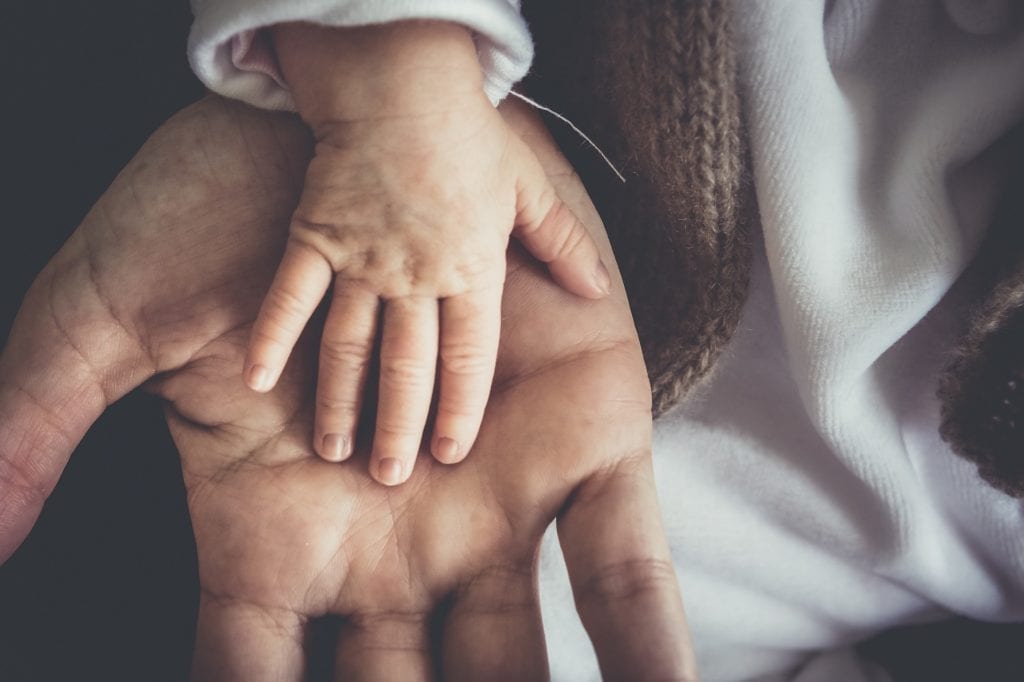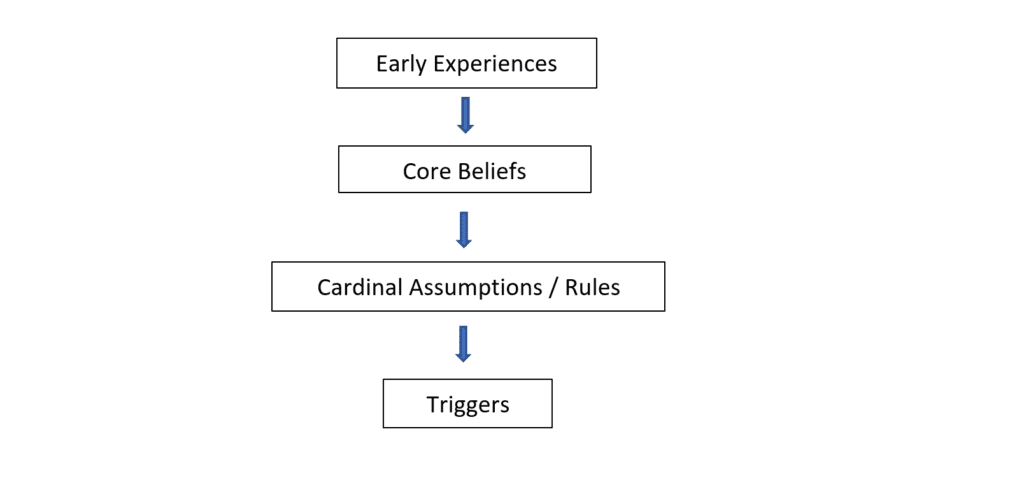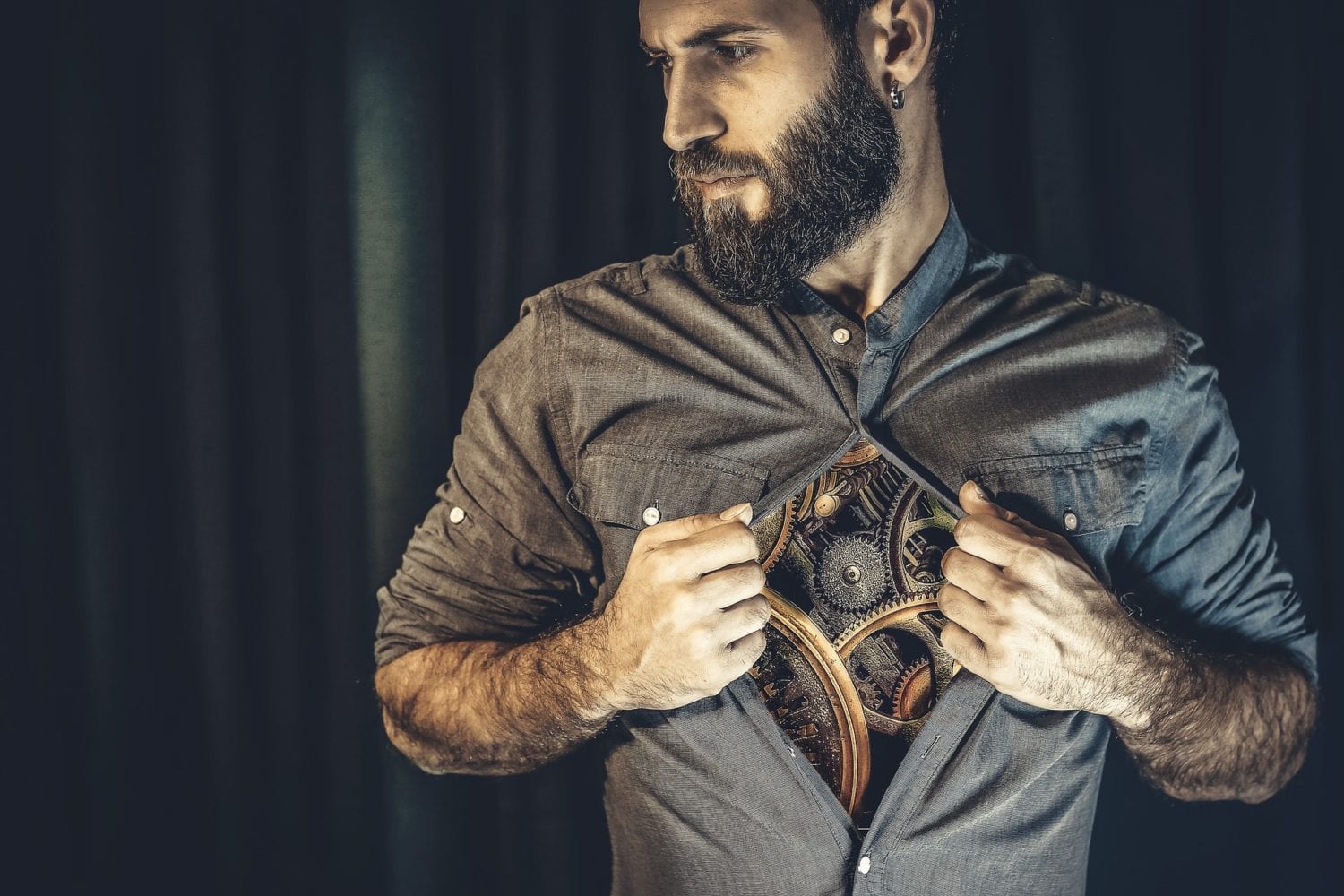What are Core Beliefs?
Core beliefs are essentially beliefs about who we are, about other people and the world we live in. They determine how we perceive ourselves and to what degree we feel, for example, worthy, competent, powerful, successful, beautiful and someone to be loved. It is thus very important to understand what core beliefs we hold about ourselves, as negative, unhelpful or unfounded beliefs can be extremely poisonous to our self-acceptance, self-esteem, to the way we view the world and life events and, finally, to our mental and emotional health.
Where do they come from?

Past experiences and early childhood situations can shape and influence our core believes. We collect such archive from messages learnt from our parents, extended family members, peers, teachers and even people who had a brief but deep impact on our lives. Sometimes these messages are useful and helpful, sometimes though they are not. Common positive core belief are: “I am worthy and capable and I have friends who love me and appreciate me”. Common negative core beliefs are: “I am worthless and stupid, people think I am a failure and they are hurtful”. You can start to see how silly comments such as “you’re ugly no one will love you, you have big ears you need to cover them up, you’re not good at this because you are stupid”, that started when we were little and that continued as we grew up, can shape core believes. They can distort the way we see ourselves, have a negative influence on our self-esteem and even damage the way we perceive the people around us and life events.
Hands up if you ever had a friend who kept the hair long to cover up the big ears…ears which you thought looked absolutely normal. Or someone who confessed not going to the beach for fear of someone making fun of their big bum…a bum so average you wonder if you heard it right.
As we get older, from time to time, we reevaluate and reassess such collection of beliefs and assumptions based on their validity, but in some cases we don’t. Often the reason for not doing so is because such beliefs and assumptions have been absorbed at a very early age and, because they are so well ingrained within us, they are perceived as unquestionable truths. In short, what happens is that we stop seeing them for what they really are and ignore or misinterpret any evidence that contradicts them.
Core beliefs are so well cemented within our personality that few people know what they really are, when and why they first imprinted on us and if they are still valid. Yet our lives are controlled and dictated by them. Furthermore, they create rules and cardinal assumptions by which we live. They become what determines what we can and cannot do and how we interpret the world.
Scary, uh?
How do they affect us?

So, we said beliefs adopted in early life tend to be very strong because, ingrained within us for so many years, they have reached an “always true” and “unquestionable” status and as such they are no longer eligible for challenging, updating and changing.
What about adopted early beliefs about ourselves like “I’m ugly”, “I’m weak”, “I’m unlovable”, “I’m stupid” and so on? It is very possible these messages and themes (repeated messages) came from a bully at school, or a jealous peer, or that they were branded on us from an unprofessional teacher, but it is also possible they were simply a funny remark that stuck with us for longer that it should have.
My mother was a skilled seamstress and loved making outfits for me and my sister. While I modelled a new outfit for her to check over, she would make loving remarks on how tall and slender I was while reminding me that shorts needed to be extra short to highlight the length and slenderness of my legs while detracting attention to the fact that my legs were bowed. I grew up feeling comfortable wearing short shorts but skirts (due to their below or above knee length) were a “no-no”. I remember being at my second year at University and still not wearing skirts until my friend, baffled by my reasoning, decided to challenge this belief I had. She insisted I wore one of her very pretty evening dresses and off we went to the Student Union. All I can say is that the overwhelming positive reaction of friends and the multitude of compliments I received that night was enough for me to question the validity of my silly core belief. Ironically, me and that outfit even made it to the top ten best thing that happened at the Student Union that year. My mum, a loving mother who loves me to the moon and back, could have never imagined her innocuous comments would have stuck with me for so many years shaping my wardrobe choices and even dictating the terms and conditions of my confidence. Yet it did because I allowed it to be unchallenged all those years.
The above is just a funny example, but when the core beliefs are such as, for example, “you are unlovable, stupid and not worthy”, by unchallenging them, a person can grow up truly believing that they are unlovable. They might grow up feeling emotionally needy and end up involved in an abusive relationship or they might try to cover up those feelings with overly narcissistic traits. Someone that grew up believing that they are stupid might, for example, choose not to pursue a specific education or career path leading to a life that somehow seems to be missing that something that makes them happy, that makes them kick. A person that grew up believing that they are not good enough, might grow up with very low self-esteem which could lead to depression. They might even try to overcompensate for this feeling by seeking perfectionism and success as a way to disprove such cardinal belief. A route that not necessarily will bring them happiness.
Core beliefs like to reinforce themselves. They almost never exist in isolation. They, in fact, interact with one another to be validated. For example, John believes to be uninteresting. He looks at the beautiful posts of his friends on social media and reasons that others lead more exciting lives while his is difficult, uneventful and pointless. John might start to feel powerless to solve problems and depression will start to develop. Marta believes she is ugly and that others are better looking. She develops a negative attitude towards life events and life itself starts to appear unfair. Marta might reason that previous relationships ended because of her looks and, since there are plenty more attractive people out there and since the world is unfair, a belief that she will never be loved will start to form. The truth might actually be that Marta is not at all ugly, but rather that her low self-esteem, disinterest in taking care of herself, alienation from social gathering and negative disposition to life events is pushing people, positive experiences and possibilities away.
Core beliefs and cultivating a positive mindset

Interestingly, the Cognitive Behavioural approach suggests that negative life events do not necessarily lead to negative results. What seems to be more important is instead the way in which the person reacts to the situation (i.e. how they interpret and think about it, and how they behave as a result). This step, however, is shaped by our very own core beliefs. Negative early experiences like poor parenting, death of loved ones, illness, injuries, bullying at school or at home, abuse, rejection from peers or family or growing in an area with crime, all contribute greatly to the development of unhealthy beliefs. These, in turn, impede us from formulating healthy judgments, solving problems, adjust to negative circumstances and can lead to relationship and social problems. Therefore, identifying and understanding how such beliefs came about, as well as challenging, updating and changing them as we grow older, is the only way to achieve healthy and positive core beliefs that in turn will help us to adjust to negative circumstances.
Let’s look at these two fictional characters: Jane and Sarah. Both have worked for many years in the same company. Both have family, similar qualifications, passions and both are in their forties. One day they are made redundant. While Jane becomes anxious and pessimistic about the future, she develops a deep sense of humiliation and starts to isolate herself from her peers and loved ones. Her self-esteem drops lower and lower, she feels she is not going to find another job and becomes depressed. Sarah, on the other hand, after an initial period of anxiety starts to look at this as an opportunity to change her life. She reflects on the fact that she is not defined by her job and has decided that she would like to explore one of the other many things she is. She likes art and kids. She starts exploring free art courses online and she also develops an academic interest in understanding kids with anxieties and difficult family backgrounds. She later develops a concept idea and soon enough she gets help from a charity and opens a craft and painting centre for underprivileged kids to build on their self-esteem.
The first step to owning healthy positive core beliefs, is to come to grips with them by getting familiar with your beliefs and their effects. Only then can we challenge them and change them to positive healthy alternatives.
Now you try! How to identify our own Core Beliefs
There are essentially three main camps:
- Beliefs about yourself: they way we understand our own self-worth. If someone has experienced harsh criticism, if someone has been neglected or rejected as a child, they may have learned to think of themselves as weak or inadequate or unlovable.
- Beliefs about other people: how we perceive people around us. Again, if someone has suffered traumas or very negative treatments from others they may adopt the belief that people are dangerous or untrustworthy.
- Beliefs about the world/life: This is about how we see the world and our lives within it. If someone grew up in a deprived or unpredictable environment they may develop negative beliefs about the world and life. They may believe the world is a bad, cruel and unfair place and their life is at risk.
A typical Core Belief breakdown is to start by writing down what we know, understand and feel about the three camps. Typically it goes like this:
- My core beliefs about myself are….
- My core beliefs about others are…
- My core beliefs about the world/life are…
Keep digging deeper and asking yourself what your answers mean to you until you finish with a simple and solid statement. That is your core belief.
During a CBT treatment this would also be the point at which to look at triggers that lead the patient to go into therapy. I think it’s interesting to look at this as it shows how negative and unfounded core beliefs can lead to a misinterpretation of who we are, what we want from life, what makes us truly happy and what are our expectations of the world and the people around us.

- Recent events/situations lead me to feel…
- My negative automatic thoughts (how do my core beliefs determine what the event means to me) about the event are…
- My personal rules and demands (how do my core beliefs lead me to act in the future based on this event/experience) are…
As we approach the start of the new year, let’s ensure we do not carry into the new term any negative and unfounded core beliefs so that we can truly move forward to new beginnings.



